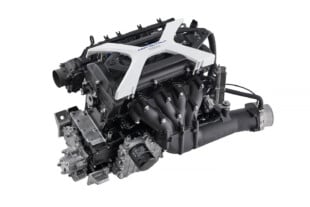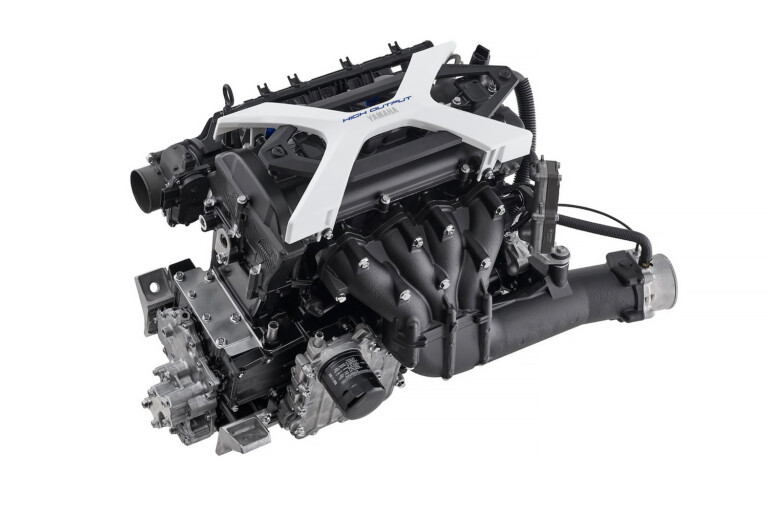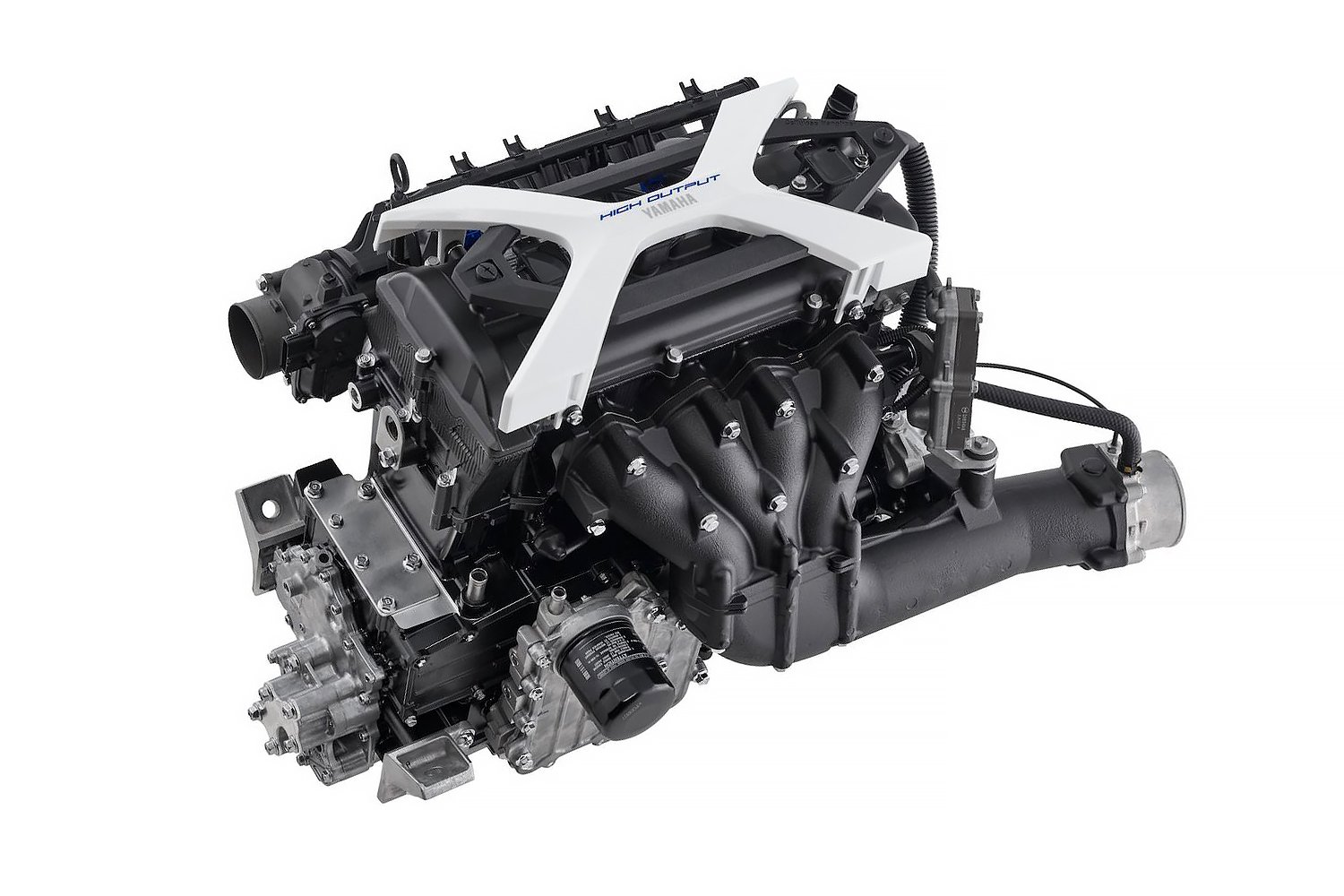In-depth technical discussion highlighted the afternoon sessions of the first day of 2014’s Advanced Engineering Technology Conference, with Clemson University’s Dr. Robert Prucka and Plex Tuning‘s Ioannis Andrianakis diving deep into their respective subject matter.
Prucka’s presentation, entitled “An Overview of Engine Combustion, Control, and Calibration Strategies for the 2014 LT1 Corvette”, ran the gamut from the engine management system’s torque control background to a wide-open throttle analysis of the engine’s performance and control strategies.
The Corvette Stingray in Prucka’s presentation was supplied by the fine folks at MSD for analysis prior to developing a new product, which Prucka did not discuss. Rather, he examined the design and programming of the engine as delivered by Chevrolet, especially in relation to emissions performance.
 Clemson University’s Renk Chassis Dynamometer is capable of both transient and steady-state operation, with automated drive cycles that are capable of performing both city and highway simulations among others. It features data acquisition tools that measures two channels of emissions, soot, and can provide a combustion analysis during its processes.
Clemson University’s Renk Chassis Dynamometer is capable of both transient and steady-state operation, with automated drive cycles that are capable of performing both city and highway simulations among others. It features data acquisition tools that measures two channels of emissions, soot, and can provide a combustion analysis during its processes.
The presentation was data-heavy, with many graphs, videos, and charts that cannot be reproduced within our article.
Background was provided on the engine’s torque control strategy, to allow attendees a greater understanding for the rest of the testing.
“The powertrain/vehicle/driver commands a torque from the engine, and the engine management system determines how to meet that torque requirement through a variety of actuators, sensors, and programmed computers. Spark timing, throttle position, cam phasing, required fuel, injector timing, and more need to be calibrated for the required situations before the engine can produce the desired torque,” he says.
Prucka’s testing revolved around deconstructing the engine’s performance in a wide range of parameters to understand why the vehicle performed a certain way in a particular drive environment. Efficiency and performance in each of these varied situations were measured. Other videos covered the engine’s performance at idle, wide open throttle, even how the variable valve phasing affects cylinder pressure, emissions and fuel economy depending upon the situation.
His presentation was an interesting look into the processes happening in the background, and the struggles presented to the aftermarket during the development process of new products.
Knock Knock
Who’s there? Plex Tuning’s Ioannis Andrianakis, who made the trip to AETC from Greece, where he’s spent thousands of hours in dyno cells and behind the laptop on many championship-winning race cars in Europe.
Andrianakis’ presentation was entitled “Winning The Battle Against Knock: A Guide To Understanding Combustion”, and provided a look into the reasons why knock can be incredibly damaging to an engine when it is not contained and controlled.
During normal combustion, ignition starts at the sparkplug, and the flame kernel propagates outward at a speed of 30-50 meters per second in a controlled fashion until most of the mixture is consumed. Knock is defined as abnormal combustion. It can occur from a misfire, pre- or post-ignition where the flame front is initiated before or after the actual spark event due to a hot spot in the cylinder or compression ignition, and detonation, which occurs when the air/fuel mixture is burned at a very high speed and/or spontaneously.
Andrianakis explained that knock is undesirable for a number of reasons, chief among them the mechanical side effects, where the cylinder pressure is typically 10-30 bars of pressure above average and can run up to 100 bars above the average if a super knock condition exists. These factors place unwanted stress on the piston, pin, cylinder head, bloc, connecting rod, and other engine components that is very destructive.
During a knock condition, there are thermal side effects that also impact component life. “The boundary layer that normally protects components from combustion heat is much thinner, andmore heat is transferred to components despite the shorter combustion duration,” he says.
As Plex Tuning specializes in tuning tools and data acquisition systems, Andrianakis is uniquely positioned to see these concerns on a daily basis. He says that knock control will prevent the destruction of the engine due to the avalanche effect.
The challenge to developing knock control systems in racing engines are many. The piezoelectric microphones typically used in knock sensors can be rendered inefficient in a race engine due to the inherently noisy environment, which makes it difficult for the sensor to separate knock from other noise created in the environment.
Many of the tools that currently exist to detect knock are not viable in a typical racing environment for a variety of reasons, among them the high cost of procurement and the lack of realtime output or closed-loop capabilities.
 Current knock control methods center around reducing static and dynamic compression ratios, retarding ignition timing, lowering coolant and oil temperatures through a variety of methods, and increasing oil cooling capabilities through the use of coatings on the valve and piston along with the use of piston jets.
Current knock control methods center around reducing static and dynamic compression ratios, retarding ignition timing, lowering coolant and oil temperatures through a variety of methods, and increasing oil cooling capabilities through the use of coatings on the valve and piston along with the use of piston jets.
He also notes that reduction of hot spots and oil contamination plays a part in knock control, as does the addition of cooled EGR gases in a production application. In a racing environment, higher octane fuels can increase resistance to knock,but he stressed that the fuel must be matched to the engine.
Water and alcohol injection have also provided knock control, and he even touched on the use of nitrous oxide and its ability to raise the total performance limit of forced induction engines. He noted that there is promising research in the field of HCCI, Homogeneous Compression Charge Ignition, but its use is far off from any sort of production application at this time.
As with any engineering effort, he explained that the risk factors need to be considered in any application. In order to determine how much knock is acceptable for a given application, the competition and budget must be taken into account, and destructive testing may need to be implemented to determine limits.
“Finishing in first place at one race does not win the series,” he says. “Dyno testing does not always correlate with results found at the track, and continuous refinement is required depending on conditions.”
























